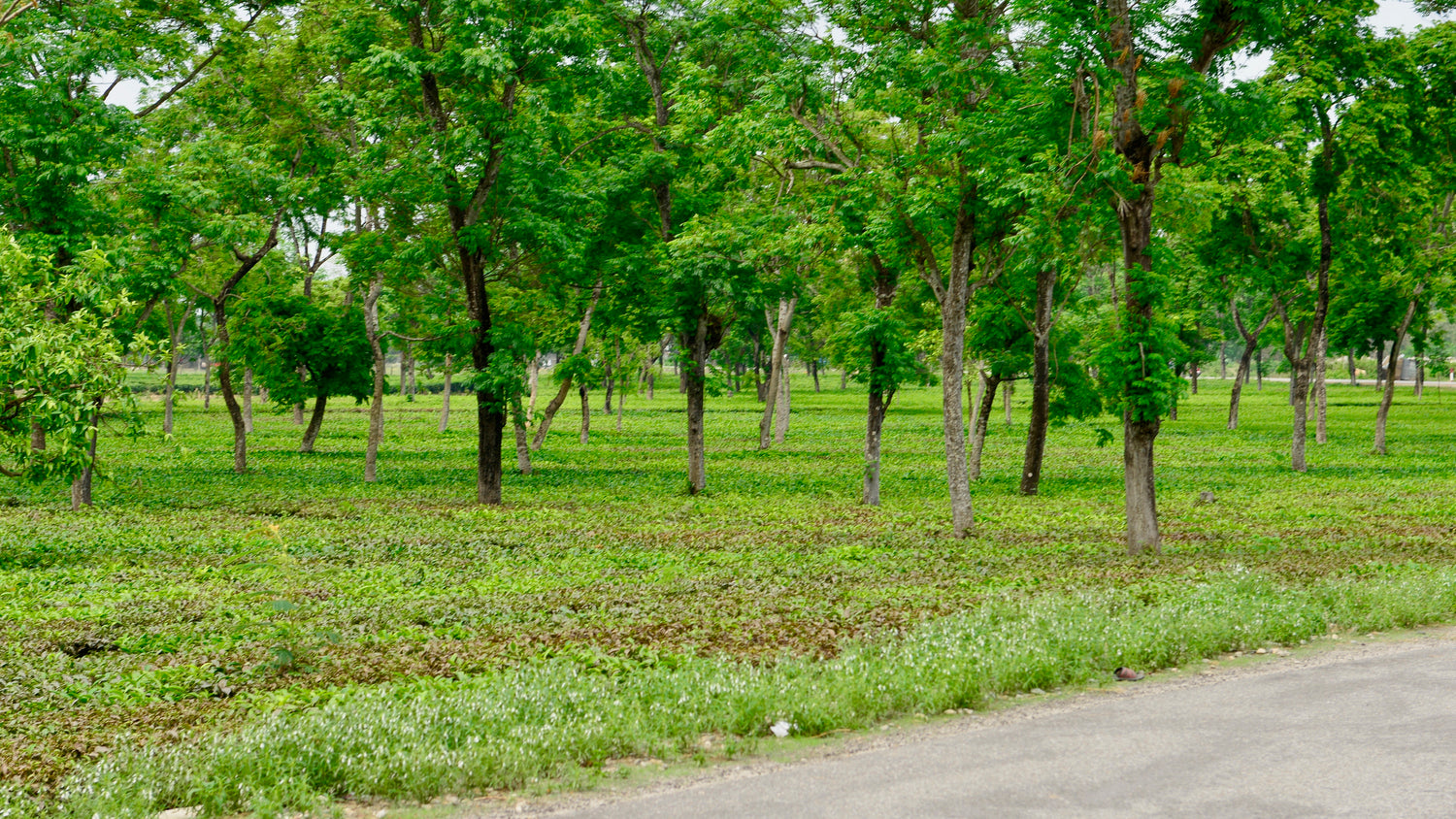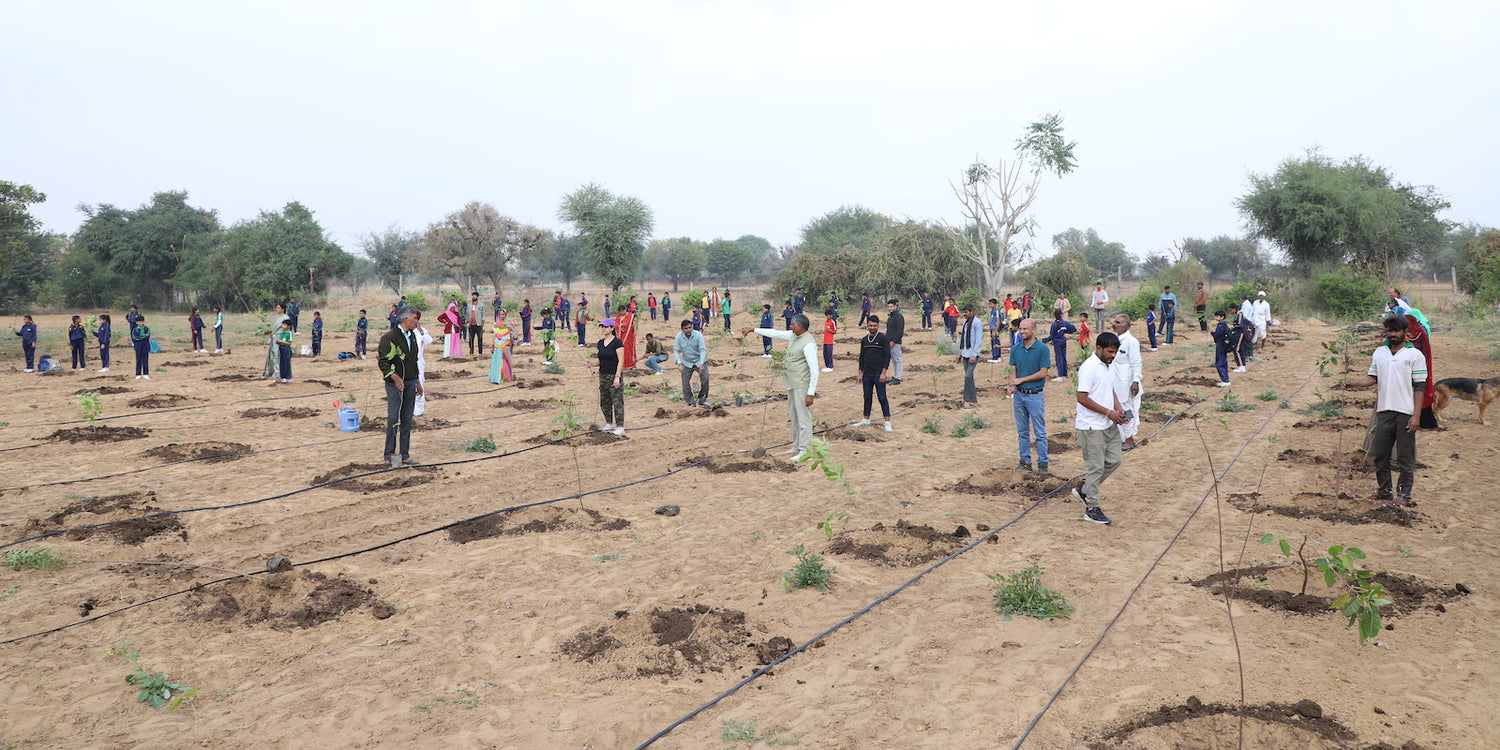Agroforestry in Gujarat: Integrating Trees and Agriculture in Semi-Ari
Gujarat, a state known for its rich cultural heritage and vibrant economy, also stands out for its semi-arid landscapes. These challenging climatic co Read more
Connect with us
-
👥 Corporates
If you are looking for:
- 🌲 Tree Plantation Events
- 📊 CSR Projects
📧 corporate@growbilliontrees.com
📞 +91 9699723523
💬 +91 9325931304 WhatsApp (Only)
🕒 Mon - Sat | 10am - 7pm IST
-
🧩 Tree Plantation NGOs
If you are looking for:
- 💰 Financial Assistance
- 🤝 Operational Support
📧 support@growbilliontrees.com
📞 +91 9699723523
💬 +91 9325931304 WhatsApp (Only)
🕒 Mon - Sat | 10am - 7pm IST
-
🌼 Individuals
If you are looking for:
- 👥 Group Tree Plantation Drive
- 🌳 Bulk Tree Plantation
📞 +91 9699723523
💬 +91 9325931304 WhatsApp (Only)
🕒 Mon - Sat | 10am - 7pm IST
Trending
Trees for Corporates
Agroforestry in Gujarat: Integrating Trees and Agriculture in Semi-Arid Landscapes
Gujarat, a state known for its rich cultural heritage and vibrant economy, also stands out for its semi-arid landscapes.
These challenging climatic conditions, coupled with frequent droughts, necessitate sustainable farming practices to ensure food security and ecological balance.
Agroforestry, the integration of trees with crops and livestock, is emerging as a transformative approach in Gujarat, offering a solution to environmental challenges while enhancing rural livelihoods.
Historical Context of Agroforestry in Gujarat
Agroforestry has roots in Gujarat’s agricultural traditions. Historically, farmers planted Neem (Azadirachta indica), Babul (Acacia nilotica), and Mango (Mangifera indica) trees alongside crops to provide shade, fodder, and fuel.
These trees also played a vital role in conserving water and soil. The Gir forests and the agricultural landscapes of Saurashtra and Kutch stand as examples of the harmonious coexistence of trees, crops, and communities.
The Need for Agroforestry in Gujarat
1. Addressing Semi-Arid Conditions
Gujarat faces low annual rainfall (400–800 mm) and high temperatures, especially in the regions of Kutch and Saurashtra. Agroforestry systems help conserve water, improve soil fertility, and provide shade, making them indispensable for sustainable agriculture.
2. Preventing Land Degradation
Land degradation due to overgrazing, salinity, and erosion is a significant issue in Gujarat. Agroforestry reduces erosion and replenishes soil organic matter, restoring the health of degraded lands.
3. Enhancing Livelihoods
Agroforestry offers farmers additional income streams through timber, fruits, and non-timber forest products like gum and resin. Studies show that integrating trees can increase farm incomes by 30–40%.
4. Improving Biodiversity
Agroforestry systems in Gujarat support diverse flora and fauna, creating habitats for birds, insects, and small mammals. This biodiversity contributes to ecological stability and pest control.
5. Contributing to Climate Change Mitigation
Agroforestry acts as a natural carbon sink. A hectare of agroforestry in Gujarat can sequester up to 20 tons of carbon dioxide annually, making it a critical tool in combating climate change.
Scientific Benefits of Agroforestry
- Soil Health Enhancement: Trees like Neem and Khejri improve soil fertility by fixing nitrogen and increasing organic matter, leading to higher crop yields.
- Water Conservation: The deep root systems of trees reduce evaporation and enhance groundwater recharge, ensuring better water availability for crops.
- Climate Resilience: Agroforestry systems buffer against extreme temperatures and erratic rainfall, ensuring more stable agricultural productivity.
Common Agroforestry Practices in Gujarat
1. Agri-Silviculture
Crops like cotton and groundnut are grown alongside timber species like Eucalyptus and Babul, maximizing land productivity and income.
2. Boundary Plantations
Farmers plant trees like Arjuna and Teak along field boundaries. These serve as windbreaks, protect crops, and provide timber and fodder.
3. Silvo-Pastoral Systems
This combines trees and grasses to provide shade and fodder for livestock. Common in Kutch, this system supports Gujarat’s robust dairy industry.
4. Horti-Silviculture
Fruit trees like Mango and Sapota (Chikoo) are integrated with timber trees, offering nutrition and income to farmers.
Fun Facts About Agroforestry in Gujarat
- Gir’s Green Legacy: The Gir region showcases agroforestry practices that coexist with the world-famous Asiatic lion population.
- Date Palm Delight: In Kutch, integrating date palms with crops has proven to be a drought-resilient agroforestry model.
- Babul’s Brilliance: This hardy tree thrives in Gujarat’s arid conditions, offering fodder, fuel, and gum while improving soil fertility.
Environmental Impact of Agroforestry in Gujarat
1. Combating Desertification
Regions like Kutch and Banaskantha face increasing desertification. Agroforestry stabilizes the soil, preventing the spread of arid lands.
2. Reducing Wind Erosion
Agroforestry systems act as windbreaks, reducing wind erosion by 70–80% and protecting crops in high-wind regions.
3. Enhancing Biodiversity
Agroforestry systems support wildlife, including birds like the Indian Roller and insects like pollinators, ensuring ecological stability.
4. Improving Air Quality
Trees in agroforestry systems filter dust and pollutants, enhancing air quality in regions affected by industrialization.
Challenges in Agroforestry Adoption
-
Limited Awareness Many farmers are unaware of the long-term benefits of agroforestry, leading to slower adoption rates.
-
Policy Barriers Complex regulations around tree felling and timber trade discourage farmers from planting high-value trees.
-
Water Scarcity Although agroforestry conserves water, initial establishment requires irrigation support, which can be a challenge in arid regions.
-
Market Access Farmers often struggle to find markets for timber and non-timber products, affecting the economic viability of agroforestry systems.
Grow Billion Trees: Transforming Agroforestry in Gujarat
Grow Billion Trees is playing a pivotal role in promoting agroforestry across Gujarat, focusing on restoring degraded lands, enhancing farmer incomes, and creating sustainable ecosystems.
Collaborations
- Partnering with the Gujarat Forest Department and local NGOs to implement large-scale agroforestry projects.
- Collaborating with research institutions to develop drought-resistant tree species suited to Gujarat’s climate.
Execution Strategies
- Tree Nurseries: Establishing nurseries to provide high-quality saplings of native and economically valuable tree species like Neem and Arjuna.
- Farmer Training Programs: Conducting workshops and demonstrations to educate farmers about agroforestry techniques and benefits.
- Market Linkages: Facilitating connections between farmers and industries to ensure fair prices for agroforestry products.
Awareness and Advocacy
- Running community outreach programs to highlight agroforestry’s role in combating climate change and boosting livelihoods.
- Sharing success stories of farmers who have benefited from agroforestry, inspiring others to adopt the practice.
Key Achievements by Grow Billion Trees
- Tree Plantation Drives: Over 8 million trees planted across Gujarat, contributing to increased green cover and soil restoration.
- Economic Empowerment: Enabled over 25,000 farmers to adopt agroforestry, increasing their annual incomes by up to 35%.
- Carbon Sequestration: Agroforestry initiatives under Grow Billion Trees have sequestered over 1 million tons of carbon dioxide in Gujarat.
Future Prospects
By 2030, agroforestry in Gujarat has the potential to:
- Increase the state’s green cover by 20%, supporting India’s climate action goals.
- Combat desertification in over 100,000 hectares of degraded land.
- Provide sustainable livelihoods to over 50,000 farming households, enhancing rural economic stability.
Conclusion
Agroforestry in Gujarat represents a sustainable approach to addressing the state’s environmental and agricultural challenges.
By integrating trees with crops and livestock, agroforestry not only enhances rural livelihoods but also restores ecological balance in semi-arid landscapes.
Grow Billion Trees is leading the way, empowering farmers, restoring ecosystems, and ensuring a greener, more sustainable future for Gujarat.
Through collective efforts, agroforestry is poised to become a cornerstone of Gujarat’s fight against climate change and desertification.
Poplar Agroforestry in Gujarat
Poplar trees thrive in Gujarat’s semi-arid regions, offering quick timber returns and helping farmers grow more by adding a layer of resilience to their agricultural practices.
Neem in Gujarat Agroforestry
The all-rounder Neem tree is a staple in Gujarat, providing shade, medicinal benefits, pest control, and timber while boosting soil fertility and farmer incomes.
Silvo-Pastoral Systems in Gujarat
Combining trees and grasses, these systems provide shade and fodder for Gujarat’s livestock, supporting the state’s dairy-driven economy while enhancing soil and water retention.
Agri-Silviculture in Gujarat
This system blends trees with crops like groundnut and cotton, turning semi-arid lands into productive ecosystems while boosting farmer earnings.
Horti-Silviculture in Gujarat
Integrating fruit trees like mango and sapota with timber species, this system adds sweetness and sustainability to Gujarat’s farms.
Date Palm Agroforestry in Gujarat
Date palms are heroes in arid Kutch, delivering sweet profits while conserving water and thriving alongside traditional crops.
Babul in Gujarat Agroforestry
Babul trees, known for their hardiness, provide gum, fodder, and timber, making them an integral part of sustainable farming systems in Gujarat.
Agroforestry for Carbon Sequestration in Gujarat
These systems store tons of carbon dioxide annually, transforming Gujarat’s semi-arid lands into unexpected climate heroes.
Boundary Plantations in Gujarat Agroforestry
Planting trees along field edges creates natural fences, reduces wind erosion, and provides farmers with additional income from timber and fodder.
Agroforestry and Biodiversity in Gujarat
From pollinators to birds, agroforestry systems create thriving habitats that support biodiversity and improve ecological balance in Gujarat’s farmlands.
Grow Billion Trees in Gujarat Agroforestry
This initiative empowers farmers with saplings, training, and market support, transforming barren lands into green, productive agroforestry systems.
Timber and Non-Timber Products in Gujarat Agroforestry
Farmers benefit from dual-income sources, selling timber and products like gum and resin, proving agroforestry is both sustainable and profitable.
You may like
Corporate Plantations
FAQ
What is agroforestry in Gujarat?
Agroforestry combines trees with crops and livestock, boosting farmer income and combating desertification. Grow Billion Trees promotes this sustainable practice across Gujarat’s semi-arid landscapes.
Why is agroforestry important in Gujarat?
It improves soil fertility, combats wind erosion, and provides farmers with timber and non-timber income. Grow Billion Trees ensures these benefits reach rural communities.
How does agroforestry combat desertification in Gujarat?
Trees stabilize soil, reduce erosion, and increase water retention, preventing desertification. Grow Billion Trees partners with farmers to restore degraded lands sustainably.
What are popular trees for agroforestry in Gujarat?
Neem, babul, and date palms thrive here, offering timber, gum, and shade. Grow Billion Trees provides high-quality saplings to farmers for these resilient trees.
How does agroforestry improve livelihoods in Gujarat?
Farmers earn dual incomes from crops and trees, creating economic resilience. Grow Billion Trees connects farmers to markets and provides training for agroforestry success.
Can agroforestry help dairy farmers in Gujarat?
Yes, silvo-pastoral systems provide fodder and shade for livestock, boosting milk production. Grow Billion Trees supports this model in Gujarat’s dairy-centric regions.
How does agroforestry improve biodiversity in Gujarat?
Agroforestry systems create habitats for birds, insects, and mammals, turning farmlands into biodiversity hotspots. Grow Billion Trees promotes designs that balance farming with wildlife.
What is the role of date palms in Gujarat agroforestry?
Date palms thrive in arid Kutch, offering sweet profits and water conservation benefits. Grow Billion Trees encourages their integration into agroforestry systems.
How does agroforestry contribute to climate action in Gujarat?
Trees in agroforestry sequester carbon dioxide, reducing greenhouse gases. Grow Billion Trees scales up agroforestry projects to maximize their climate benefits.
What challenges do farmers face with agroforestry in Gujarat?
Lack of awareness and market access are common hurdles. Grow Billion Trees bridges these gaps with resources, training, and support for farmers.
How do boundary plantations benefit Gujarat farmers?
Boundary plantations provide natural fences, wind protection, and extra income from timber and fodder. Grow Billion Trees ensures farmers adopt this practical agroforestry system.
How does Grow Billion Trees support agroforestry in Gujarat?
We plant trees, train farmers, and build market linkages, ensuring agroforestry systems thrive and benefit both people and the environment.























